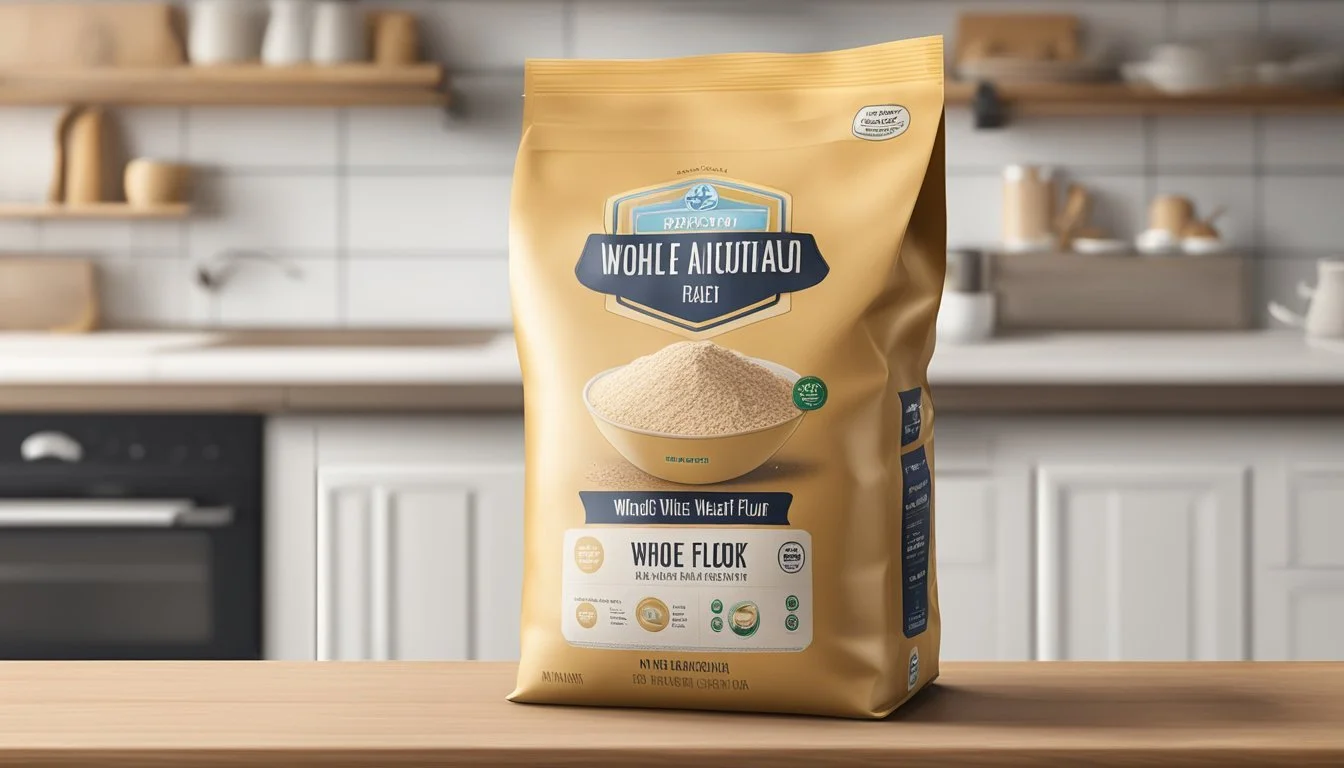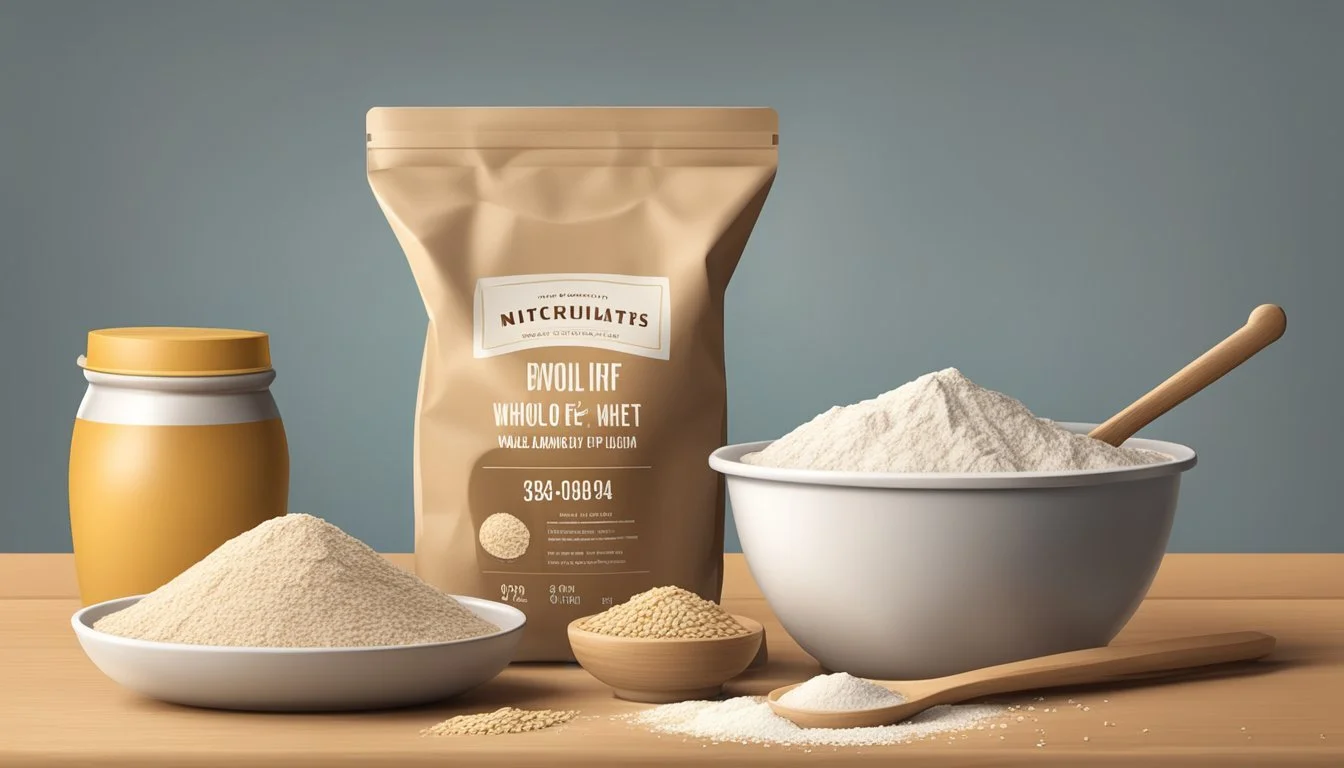Does Whole Wheat Flour Expire?
Understanding Shelf Life and Storage Tips
Whole wheat flour is a staple in many kitchens, but its higher fiber content compared to refined flour makes it more prone to spoilage. The shelf life of whole wheat flour is significantly affected by storage conditions. When stored in a cool, dry place in its original unopened packaging, whole wheat flour can last for up to 6-8 months. However, once opened, its shelf life drops to around 2-3 months due to increased exposure to air and moisture.
Moisture is a critical factor to be aware of, as it can lead to mold and bacterial growth, hastening the flour's expiration. High temperatures can also negatively impact the nutritional value and baking properties of whole wheat flour by damaging its proteins and starches. To maximize its shelf life, consider refrigerating or properly sealing opened whole wheat flour.
Recognizing the signs of expired whole wheat flour is essential for maintaining the quality of your baked goods. If the flour develops a rancid odor, appears clumpy, or shows any signs of mold, it's time to discard it. By understanding the factors that affect its shelf life, you can ensure that your whole wheat flour remains fresh and safe to use.
Understanding Flour Composition
Whole wheat flour contains various components that offer different nutritional benefits and affect its shelf life. Recognizing the differences between whole wheat and other types of flour helps in making informed choices for baking and storage.
Components of Whole Wheat Flour
Whole wheat flour is derived from the entire wheat kernel, which includes the bran, germ, and endosperm.
Bran: The outer layer, rich in fiber and nutrients, contributes to the flour's darker color and denser texture.
Germ: Contains essential fats, oils, and vitamins. While nutrient-rich, the oils can cause the flour to spoil faster.
Endosperm: The largest part, mostly made up of carbohydrates and some protein, providing structure in baking.
These components make whole wheat flour nutritious but also more prone to spoilage due to the fats and oils in the germ.
Differences Between Flour Types
Flour types vary significantly in their components and intended uses.
All-Purpose Flour: Milled from the endosperm only, resulting in a longer shelf life and a finer texture.
Cake Flour: Lower protein content, ideal for delicate cakes and pastries.
Self-Rising Flour: Contains added leavening agents, suitable for quick breads.
Nut and Coconut Flours: Made from nuts such as almonds or coconuts, rich in fat and protein, often used in gluten-free baking.
Comparing these, whole wheat flour stands out with its higher nutritional value from the bran and germ but requires careful storage to prevent spoilage from the natural oils.
Factors That Affect Flour Shelf Life
The shelf life of whole wheat flour is significantly influenced by external conditions such as moisture, temperature, and exposure to oxygen and light. Proper storage is vital to prolong its usability and prevent spoilage.
Impact of Moisture and Humidity
Moisture and humidity are critical factors affecting the shelf life of whole wheat flour. High moisture levels can lead to mold growth and clumping, making the flour unusable. Whole wheat flour, with its higher fiber content, is particularly susceptible to absorbing moisture from the environment.
Storing the flour in an airtight container can help prevent moisture intake. Additionally, keeping it in a dry place away from sources of humidity, like a well-sealed pantry, is essential. If living in a high-humidity area, using a dehumidifier in storage spaces can further protect the flour.
Temperature and Storage Conditions
Temperature also plays a significant role in the longevity of whole wheat flour. Cooler environments slow down the deterioration process, whereas heat can accelerate spoilage.
Storing flour in a cool, dry place, such as a pantry, is adequate for short-term use. For long-term storage, placing it in the fridge or freezer is recommended. These environments limit heat exposure and prevent insect infestation and bacterial growth. Using airtight containers in these cool environments ensures minimal exposure to ambient air and moisture.
Oxygen and Light Exposure
Exposure to oxygen and light can degrade whole wheat flour, leading to oxidation and rancidity. Flour should be kept in opaque, airtight containers to prevent light exposure and limit oxygen intake.
The presence of seals or vacuum-sealed storage bags can significantly extend its shelf life by minimizing air contact. Storing flour away from direct sunlight is crucial, as UV rays can accelerate spoilage. Proper sealing also prevents the flour from absorbing odors from surrounding food items, ensuring its quality remains intact.
Signs of Flour Spoilage
Identifying spoilage in whole wheat flour is crucial to ensure its safe usage. Key signs include visual changes, unpleasant odors, and the presence of mold or pests.
Visual and Textural Changes
Whole wheat flour should appear consistent in color and texture. Fresh flour has a light brown hue and a fine texture. Spoiled flour may have noticeable discoloration, turning gray or white.
Clumping is another sign—moisture causes the flour to form lumps. If the flour feels coarse or gritty, it may signify degradation. Always check for these visual cues before using flour in recipes.
Odor and Taste Alteration
Smell is a strong indicator of flour spoilage. Fresh whole wheat flour has a mild, nutty aroma. Spoiled flour, on the other hand, may emit a rancid, sour, or musty smell.
A quick sniff can help detect such odors, which often indicate rancidity due to the breakdown of oils in the germ. Taste is another tell-tale sign; if the flour tastes off, it's best to discard it.
Mold and Pest Infestation
Mold growth is one of the most obvious signs of flour spoilage. Moldy flour can exhibit dark spots or fuzzy growths, indicating fungal contamination. Mold not only spoils the flour but also poses health risks.
Pests like insects or weevils may infest flour stored improperly. Tiny black specks or moving particles are clear signs of infestation. Always store flour in airtight containers to prevent such issues.
Proper Storage Techniques
Whole wheat flour's shelf life can be significantly extended with proper storage methods. Key practices include placing the flour in airtight containers and maintaining specific temperature conditions.
Best Practices for Pantry Storage
Whole wheat flour is shelf-stable but needs careful storage to prolong its usability. In the pantry, it should be kept in airtight containers to prevent moisture absorption and pest infestation.
The pantry environment must be cool and dry to avoid mold and bacterial growth. Avoid storing flour near heat sources; placing it in a darker, less exposed pantry shelf is preferable.
Plastic bags with sealing mechanisms can be useful, but rigid airtight containers offer better protection. Ensure the containers are clean and dry before adding the flour, as any residual moisture or contaminants can accelerate spoilage.
Extending Flour Lifespan in the Fridge or Freezer
Storing whole wheat flour in a fridge or freezer can more than double its lifespan. For the fridge, ensure the flour is in an airtight container to avoid absorbing odors and moisture from other foods.
In the freezer, airtight containers or vacuum-sealed bags are ideal. This method can keep the flour fresh for up to two years. Label the containers with dates to keep track of storage times.
Single-use portions can be measured and stored to simplify usage, preventing repeated opening and closing of the main container, which could lead to contamination and spoilage. Always allow frozen flour to reach room temperature before use to avoid clumping in recipes.
Deciphering Expiration and Best-by Dates
Understanding how to read expiration and best-by dates is crucial for maintaining the quality and safety of whole wheat flour. These labels offer insights into when the flour is at its peak freshness and when it might start to degrade.
Understanding Food Labeling
Expiration dates and best-by dates serve different purposes. Expiration dates indicate the last date the product is safe to consume. For perishable items, this date is critical. Best-by dates, on the other hand, refer to the time frame during which the item retains its best quality.
For whole wheat flour, best-by dates are often more common. This type of flour can still be safe past this date if stored properly. However, its quality, such as taste and texture, might begin to decline.
Safety Versus Quality Considerations
Expired flour is generally safe to use beyond the best-by date, yet safety depends on several factors like storage conditions. If the flour has been kept in a cool, dry place or refrigerated, it may remain usable for months.
The primary concern with expired flour is rancidity, which affects flavor rather than safety. If the flour develops an off smell or taste, it should be discarded. Food safety experts recommend regularly checking stored flour for any signs of pests or mold, which indicate it should not be used.
Storage plays a significant role in maintaining the quality of whole wheat flour. Properly sealing and refrigerating or freezing can prolong freshness and ensure a better baking outcome.
Health Implications of Consuming Spoiled Flour
Consuming spoiled whole wheat flour can pose serious health risks. One major concern is rancidity. Rancid flour often has a bitter or soapy taste, indicating that the fats in the flour have oxidized. This can happen more quickly in whole wheat flour due to its higher oil content.
Spoiled flour can also attract moisture, which can lead to mold growth and the production of mycotoxins. Mycotoxins are toxic compounds produced by certain molds and can lead to severe health issues.
Symptoms of consuming spoiled flour might include:
Vomiting
Diarrhea
Nausea
These symptoms are the body's natural response to get rid of harmful substances. Long-term exposure to mycotoxins can cause more severe health problems, including liver damage and immunosuppression.
Additionally, bacteria can grow in flour as it ages. This increases the risk of foodborne illnesses. Proper storage, like refrigeration or freezing, can help prolong the shelf life of whole wheat flour and reduce these risks.
Always check for any visible signs of spoilage, like mold patches, and discard flour if it has an off smell. Detecting rancidity or spoilage early can significantly reduce health risks associated with consuming spoiled flour.
Incorporating Whole Wheat Flour in Recipes
Incorporating whole wheat flour into your recipes can enhance the nutritional value of your baked goods while adding a rich, nutty flavor. However, making the switch from all-purpose flour requires some adjustments to maintain the desired texture and moisture in your creations.
Adjusting for Whole Wheat in Baking
When using whole wheat flour in baking, it's essential to adjust recipes carefully. Whole wheat flour tends to absorb more liquid than all-purpose flour. Adding an extra two teaspoons of liquid per cup is a good rule of thumb to keep cakes and cookies moist.
For yeast breads, let the dough rest for around 25 minutes before kneading. This allows the flour to hydrate fully, which results in a softer texture. Using baking powder might also require slight adjustments, as whole wheat flour can affect the rise.
Substituting Flours and Recipe Considerations
Substituting whole wheat flour for all-purpose flour isn't always straightforward. For home-cooked meals and baked goods, start by replacing only half of the all-purpose flour with whole wheat. This technique preserves the desired texture and flavor.
If a recipe calls for whole grain flours, it's already tailored to work well with ingredients like whole wheat flour. For those who require gluten-free options, combining whole wheat with gluten-free flour can yield excellent results without compromising consistency. Always store whole wheat flour in a cool, dry place to maintain its potency and avoid it going rancid.





